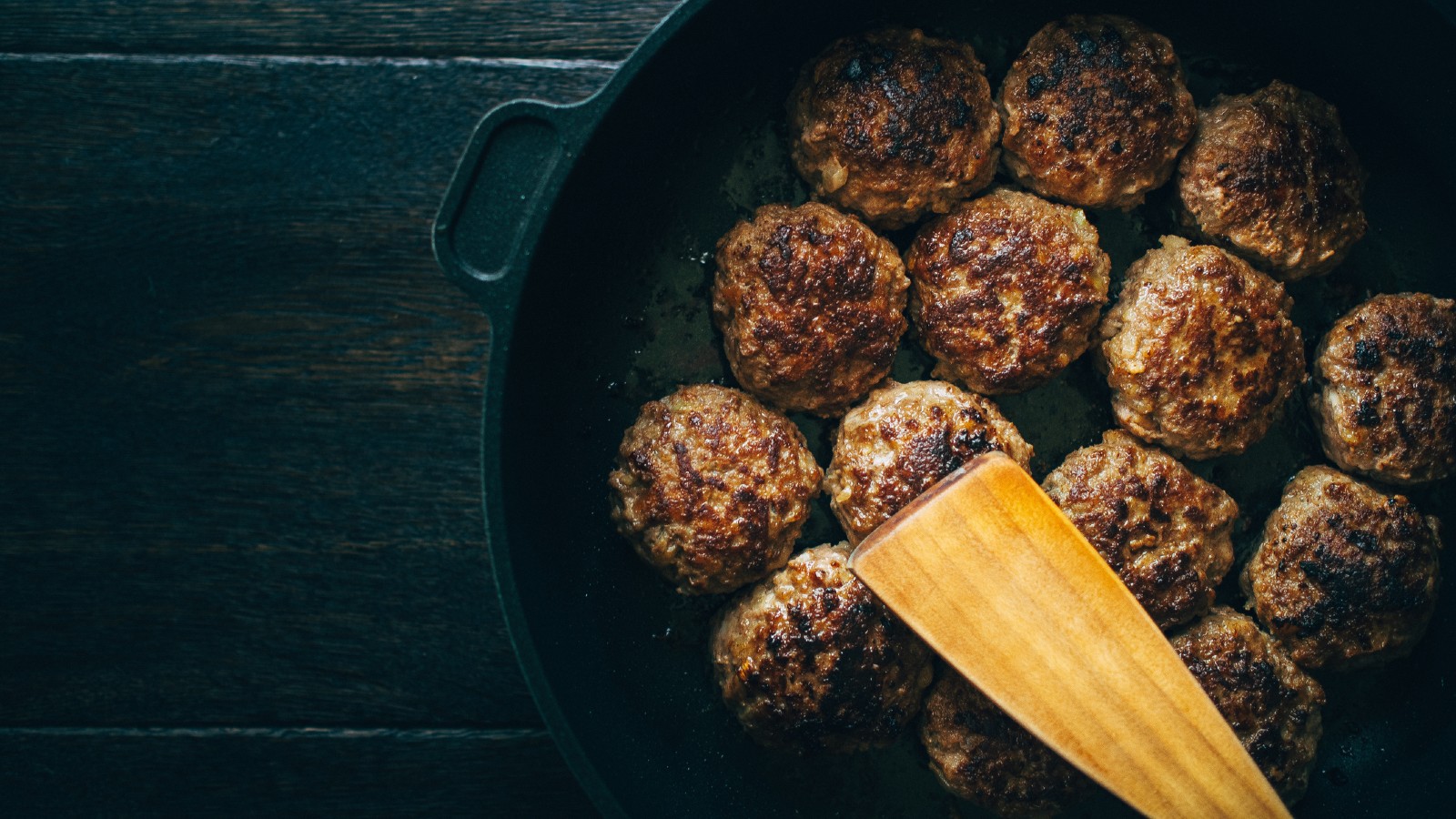Any conversation discussing the origins of Jewish foods inevitably leads someone to exclaim, “We were poor; it’s what we could afford!” And while there is certainly some truth to that claim, let’s not oversimplify things.
Jewish food is not purely poverty fare. Elaborate dishes like fluden, pastilla, and fesenjan demonstrate that at many times, large numbers of Jews lived in wealth (or at least not extreme poverty).
But there’s also no denying that, for much of history, Jews lived fairly simple lives. Coupling that with the desire to not waste God’s gifts created a Jewish kitchen that thrived on thriftiness. The following nine dishes showcase Jewish frugal inventiveness from communities around the world.
Brisket
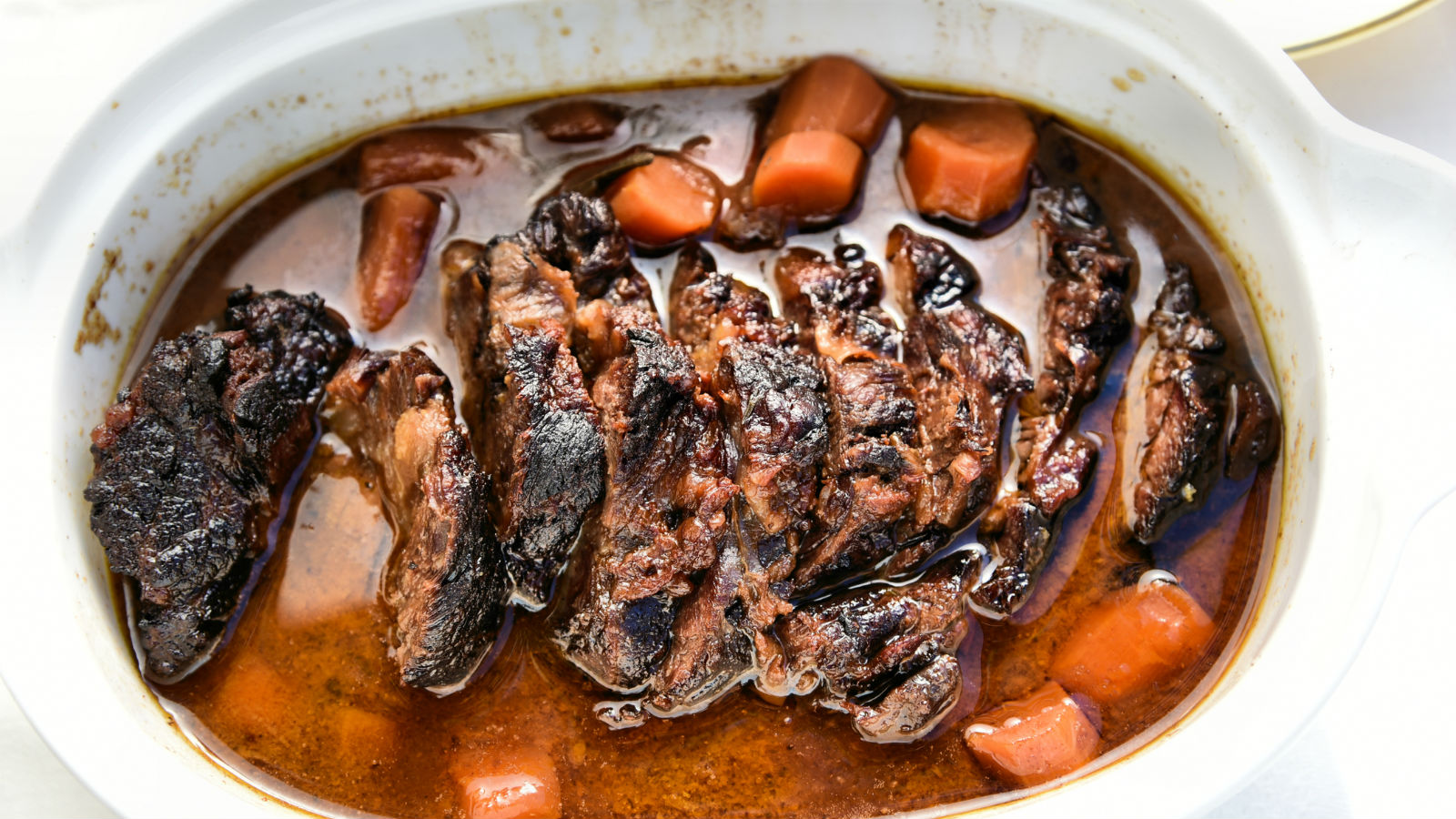
The Nosher celebrates the traditions and recipes that have brought Jews together for centuries. Donate today to keep The Nosher's stories and recipes accessible to all.
Anyone who’s recently bought this beef cut is about to stop reading. But bear with me a moment. Since late Medieval times, Ashkenazi Jews only ate the tougher forequarters of a cow. Brisket was not considered a luxurious cut, but by long and slow cooking, Jews turned it into a succulent delicacy. This led to increased demand among kosher consumers, which in turn led to prices that today can easily run $15-20 per pound. The lesson: If you find a way to make your inexpensive food taste great, keep it to yourself!
Marak Regel
Inexpensive ingredients are the basis of a thrifty kitchen. About 40% of the weight of the animal is offal — organs, glands, and other non-muscle parts. Jews everywhere have turned these economical cuts into delicious meals, but none as famously as the Jews of Yemen. Their best-known soup is named for its core ingredient. Literally translated as “foot soup,” marak regel is a hearty, slow-cooked calf’s foot stew. Its flavor is usually brightened with a dash of hilbeh or spicy zhug.
Mamaliga
Romanian Jews were no poorer than the other peasants there. Mamaliga, a cornmeal porridge, became their most beloved comfort food staple. The Ottoman Turks specifically introduced cornmeal as an inexpensive substitute for wheat, which was saved for the Turks themselves. Mamaliga had the added benefit of versatility; leftover morning porridge solidified and was cut into squares for later meals.
Albondigas
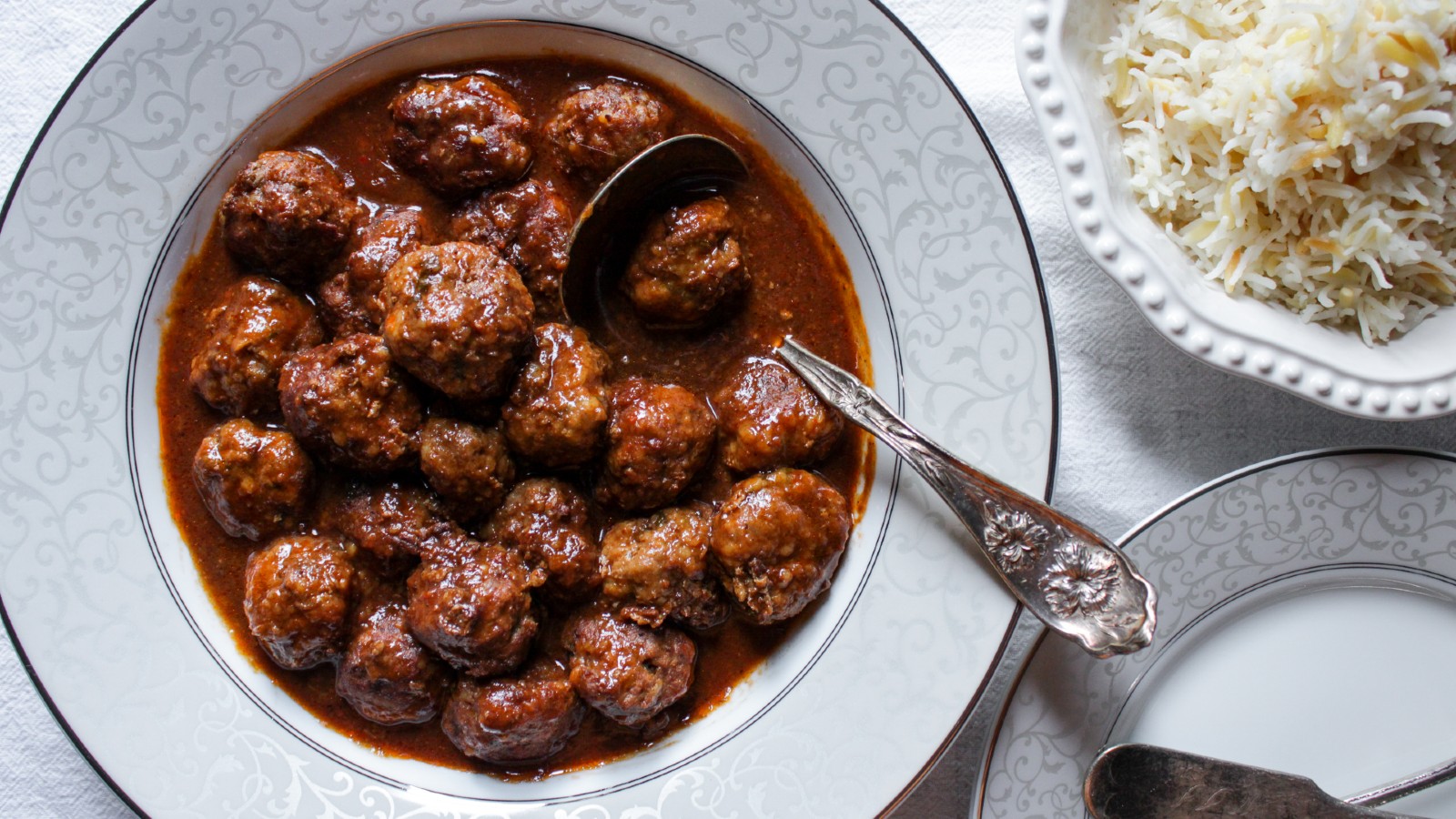
Another frugal culinary technique stretches foods using inexpensive fillers. Albondigas are classic Sephardic meatballs. While meatballs were popular in Arab cuisine, it was Sephardic Jews who added in cheaper vegetables or grains for bulk. Common albondiga varieties contain leeks, spinach, or rice mixed with ground meat.
Boyos de Pan
In my house growing up, old bread became French toast or croutons. Hundreds of years earlier, Sephardic cooks found their own way to repurpose stale bread. They soaked it in milk, added eggs and cheese, and fried up individual spoonfuls. Such boyos (balls) became one of the beloved “three B’s” of Sephardic pastries along with bourekas and boulemas.
Gefilte Fish
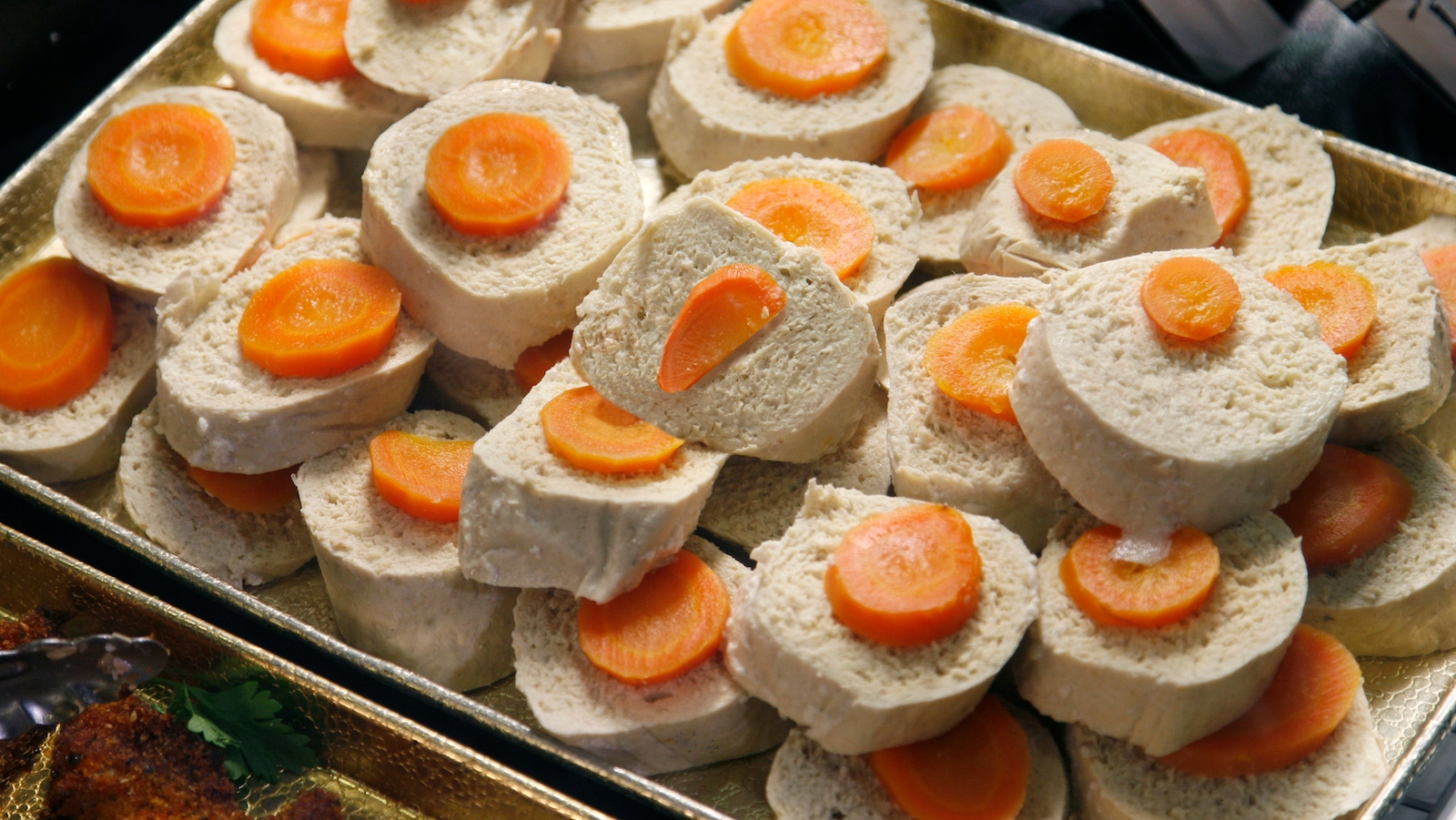
The precursor to gefilte fish was inherited by Ashkenazi Jews from their non-Jewish neighbors, who stuffed a fish skin with minced, deboned fish mixed with spices, then grilled it over a fire. Jews realized that by mixing in cheap onions and bread crumbs they could feed more hungry mouths. To flavor the starchy filler, they switched to poaching the fish in a broth of fish bones.
Kashkarikas
Some frugal Jewish cooks even turned kitchen scraps into delicacies. For kashkarikas, Turkish Jews fry leftover zucchini peels in olive oil, stew them slightly in a tomato sauce, and finish with a touch of lemon juice.
Knish
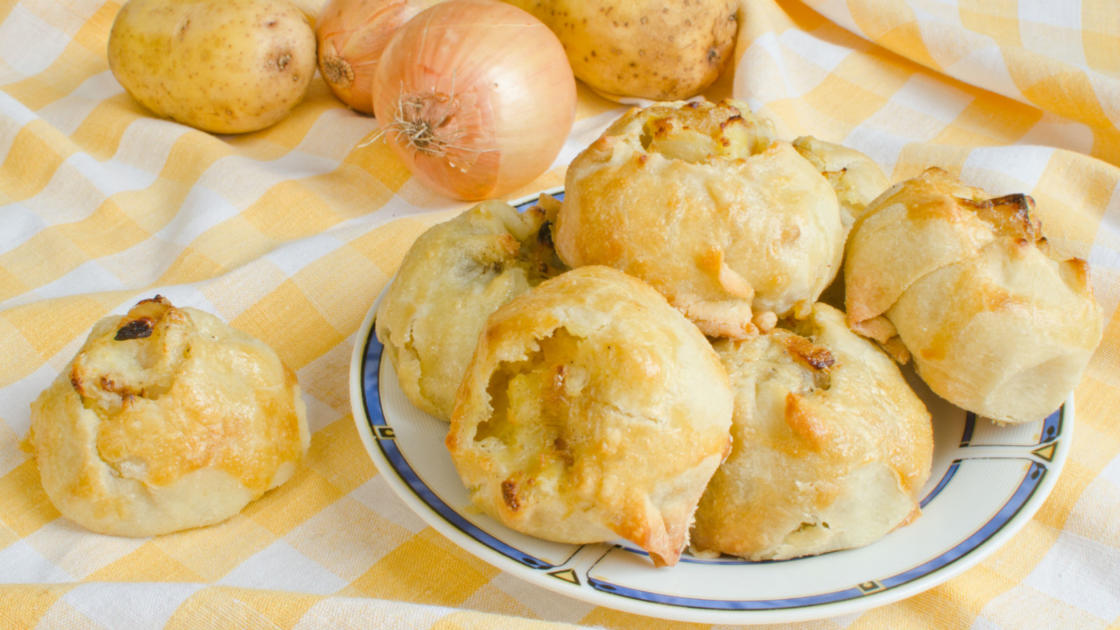
Many Jewish dishes take leftovers and repurpose them into something different. Perhaps the most classic example is the knish. Evocatively characterized as “the Ashkenazi version of Tupperware,” knishes took whatever wasn’t eaten fresh (potatoes, kasha, etc.), wrapped it in a yummy pastry, and gave it new life.
Shamburak
The contemporary Jerusalem eatery Ishtabach offers an even more delicious dish that repurposes leftovers. Born among the Syrian Kurdish community of Jerusalem, shamburak originally used up Shabbat remains. Fresh bread dough is piled with mashed potato, meat, and vegetables. The dough is closed up and baked until crispy and delicious. Think of it as a meat calzone, but even better.
Whether by cooking these exact dishes, or by using the principles behind them to create your own, look to Jewish food history for frugal inspiration.Inexpensive ingredients, cheap fillers, repurposed leftovers, and reduced food waste — that’s the Jewish way in the kitchen!
